
The thermostat is an essential part of your heating and cooling system. You need the right thermostat for convenient central heating temperature control. It will also help if your temperature controller is safe and energy-efficient.
Now, finding a suitable thermostat isn’t easy. How do you choose the best one for your systems with so many temperature controllers on the market?
Great news! We know about the different temperature controllers and can help you pick the best one. Furthermore, we’ll tell you how to set up your thermostat to save more money.
Sounds interesting? Keep reading to learn more.
What Is a Thermostat?
The thermostat is a controller for your heating and cooling system. This device is essential for an HVAC system because you can’t adjust the temp settings without it.
You don’t need to learn how to use a central heating thermostat. These devices are straightforward — you just need to set the desired temperature to let them run.
Now, how do they work?
- The thermostat sends the electricity to power the heating element in your equipment.
- After the room temperature reaches the desired level, the thermostat will stop the electrical current, allowing the heater to cool down.
- The process cycles automatically to sustain the temperature.
There are two categories of thermostats: low-voltage and line-voltage thermostats.
- Line-voltage thermostats use 120 or 240 Volts to work. They usually control baseboard heaters. These thermostats are connected through a single pole or a double pole wiring to the circuit breakers (or fuse boxes).
- Low-voltage thermostats need 24 Volts or fewer. Most central heating thermostats are low-voltage, and they are commonly used for electric furnaces, heat pumps, and boilers.
You can connect a central heating thermostat in several ways, depending on its type:
- Wired connection
- Connection through a transformer (to reduce the voltage)
- Wireless devices that work on batteries
Now, let’s see how a thermostat can improve your central heating equipment.
Advantages of a Central Heating Thermostat
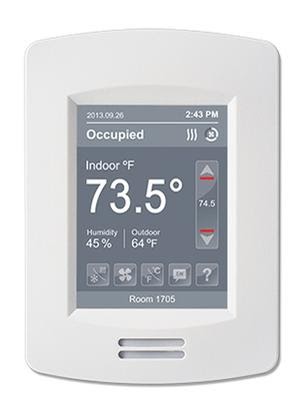
High-quality devices can help you control temperature more effectively while allowing you to save more money. Here’s how your central heating system benefits from a thermostat:
- Control & Scheduling. You can easily adjust the temperature for selected rooms and schedule heating and hot water supply.
- Reduces Emissions. Advanced thermostats offer more precise control, allowing your equipment to produce fewer emissions of carbon dioxide (CO2).
- Energy Efficiency. You will optimize the energy consumption with accurate temp control and a programmable schedule.
- Cost Savings. Using the right equipment can save you over $100 and 700lb (320kg) of CO2 emissions yearly.
As you can see, installing advanced heating & thermostat equipment has undeniable pros. But what kind of temperature controller should you get?
Different Types of Temperature Controllers
The market offers multiple thermostat technologies for homes and commercial environments. You can choose from a basic mechanical home thermostat to an advanced smart central heating thermostat.
Let’s look at each category up-close.
Mercury Contact (Analog Thermostat)

Mercury contact thermostat has a dial of numbers indicating temperature. The device contains a glass vial (ampoule) with mercury attached to a bimetallic strip (coil). The mercury inside controls the opening and closing of the switch contact.
Analog thermostat is the most common type of household temperature controller. The simplicity, durability, and low price make them perfect for schools, elderly homes, and offices.
However, these devices lack the accuracy, energy efficiency, and customizability of electronic thermostats.
Mechanical Thermostat
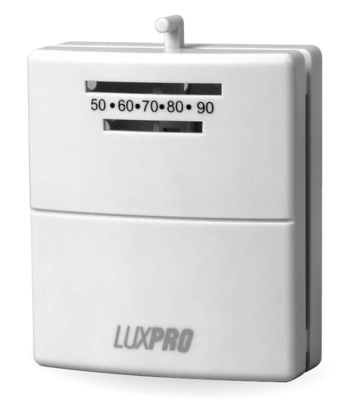
The mechanical thermostat relies on the bimetallic coil strip, just like an analog device. But unlike analog thermostats, the mechanical device doesn’t contain an ampoule with mercury.
This controller uses a simple mechanical contact to control the temperature. It also includes a heat anticipator — a wire that mounts to the strip to adjust the temperature settings.
You need to remember that mechanical and analog thermostats don’t show an actual indoor temperature. They are less accurate than digital (electronic) devices. The temperature you see on mechanical thermostats is usually about five degrees different from the real one.
Digital Thermostat
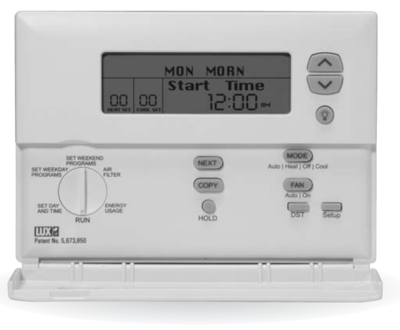
Digital thermostats rely on electronic controls instead of a bimetallic coil. These devices use built-in electronic sensors to determine and control indoor temperature. Therefore, digital room thermostats for central heating provide a more accurate control than analog and mechanical devices.
Digital devices also feature easily understandable LED displays for more convenient control. You can change modes (like heating, cooling, and fan), temperature settings and turn the heating system OFF with a few clicks. However, these devices are not as advanced as programmable thermostats.
Electronic Programmable (Smart) Thermostat
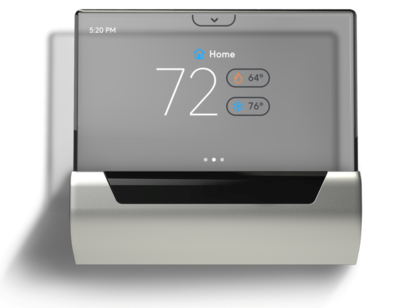
Smart (programmable) thermostats are an upgrade over digital devices with more useful features. Now, what is a programmable thermostat?
Central heating programmable room thermostats allow you to control the temperature and work schedules for different areas. And the best part — these devices make it possible to manage your central heating systems using computers or mobile devices. With some smart thermostats, you can control your heating equipment from any part of the world via the Internet.
Automatization is another thing that makes smart thermostats different from digital controllers. Advanced devices learn from user’s choices to optimize temperature, hot water control, and energy usage.
Thermostatic Radiator Valve
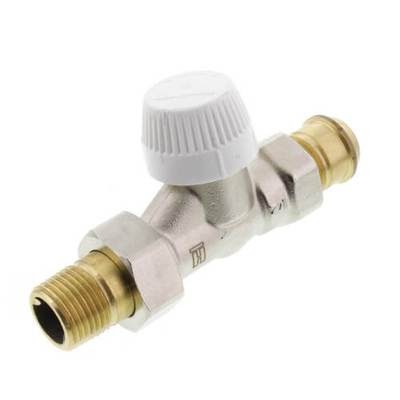
When describing what a thermostatic valve radiator is, we should mention that this device doesn’t control the boiler valve. Instead, thermostatic radiator valves (TRV) manages the hot water flow in the radiator.
TRVs are connected to the side of the radiator. They usually have numeric symbols (from zero to six) representing the level of produced heat. The central heating radiator thermostat senses the air temperature surrounding it to keep the water temperature on the desired level.
Some TRVs can be connected to smart thermostats, allowing you to monitor and control the radiator’s heat level remotely using a mobile device.
Cylinder Thermostat (Boiler Thermostat)
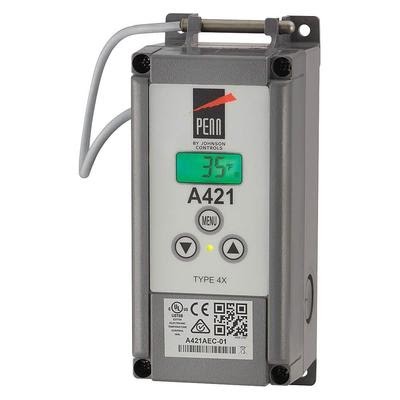
A cylinder (boiler) thermostat controls the level of heat supply in the water tanks.
These devices are straightforward and work similarly to TRVs. You need to set the desired water temperature level on the thermostat. The controller will sense the temperature inside the tank and automatically switch the heating ON and OFF. Thus, the water in the tanks will remain as hot as you need it.
Just as TRVs, some cylinder thermostats can connect to smart devices for remote control.
How to Set Up a New Thermostat
Let’s assume that you’ve got a suitable thermostat for your heating system or boiler. Right now, you might be thinking, “How do I set my central heating thermostat?”
Here’s a couple of things to keep in mind as you install new equipment:
- Keep your thermostat out of direct sunlight because sun rays can prevent it from reading the indoor temperature accurately.
- The best places to put a thermostat for central heating should have good airflow for more precise measurements.
- Set the minimal temp setting before installing a thermostat and let it work for a couple of hours (this can help you avoid condensation problems).
You shouldn’t hesitate to ask for professional help. For example, replacing old boilers with gas combi devices can be difficult even for seasoned specialists.
Central Heating Thermostat Temperature Settings

The right thermostat settings will create a comfortable indoor environment. Moreover, it will reduce energy consumption and CO2 emissions.
Do you want to set the best temperature for your central heating thermostat? Here are some rules for the perfect settings:
- Keep the temperature above 13 and below 30 degrees Celsius (from 55 to 86 degrees Fahrenheit) during warm seasons.
- The recommended central heating thermostat setting for colder seasons stands at around 20 degrees Celsius (86 degrees Fahrenheit).
- Try not to set the temperature up when you feel too cold.
- Make it a habit to activate your heating equipment early in the day, as it will warm your rooms faster.
A few more tips for people who use programmable (smart) thermostats. Set them up to turn on about 30 minutes before you wake up. And if your house is empty during work hours — schedule the thermostat to start working about 30 minutes before you return home.
Conclusion
Choosing the proper central heating temperature controls and using them correctly will improve your comfort and help you save money. And so will replacing mechanical thermostats with energy-efficient electronic programmable technology.
Blackhawk Supply offers a wide range of central heating thermostats for everyone. Pick the best equipment for your home or workplace today!


